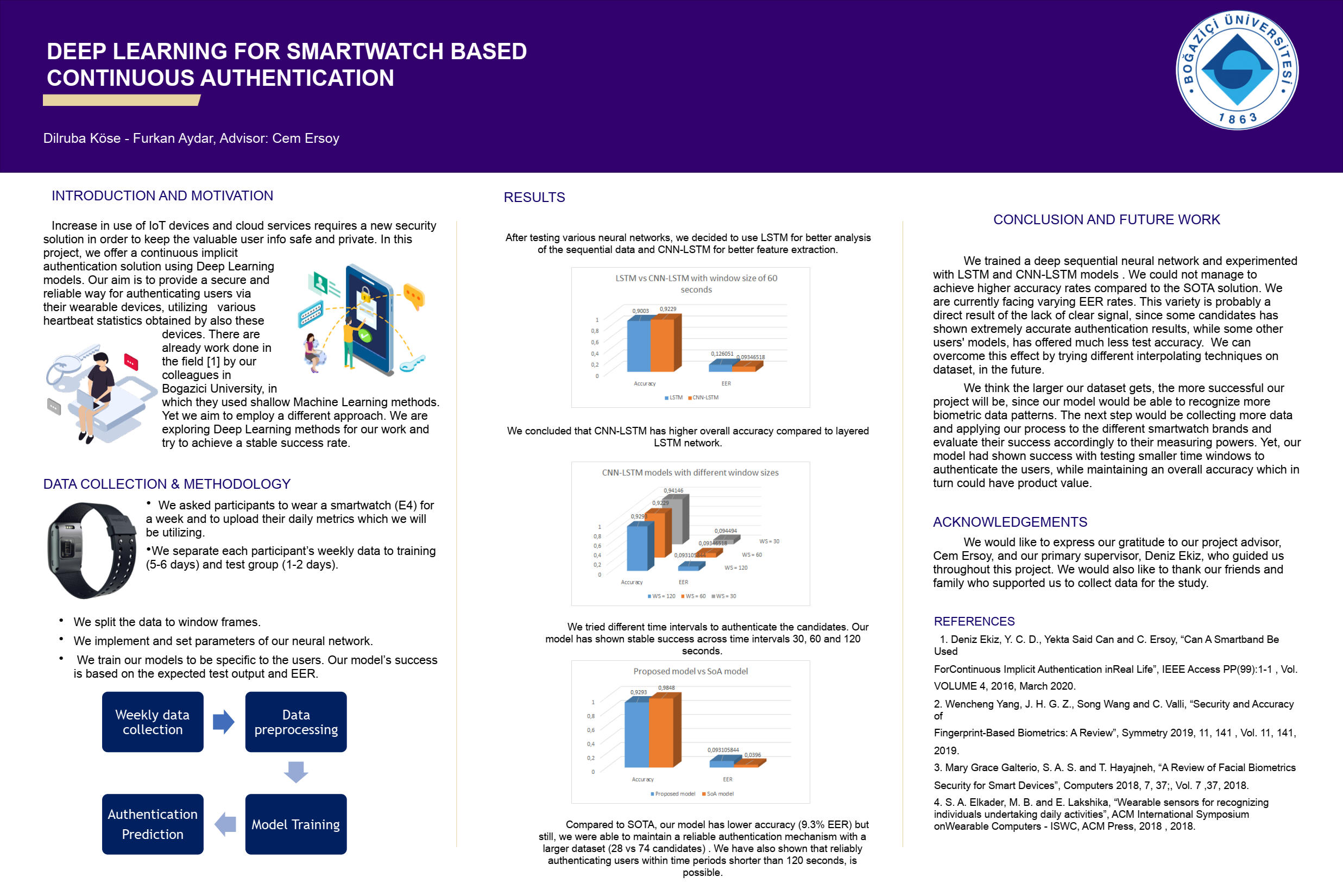Smartwatch Based Continuous Authentication with Deep Learning Methods
Security of the private user data stored in cloud services and IoT devices is a serious concern.

Security of the private user data stored in cloud services and IoT devices is a serious concern. It is an emerging need to keep critical and sensitive user info safe, since the leak of such valuable belonging would result in dramatic results or damage. User authentication has become a crucial topic and one of the main parameters of the customer satisfaction, which introduced various applications and implementations of the authentication providers, such as password protection, face recognition, fingerprint recognition, voice recognition and more. Yet most of these implied technologies still have major drawbacks. Even strong kinds of the face recognition applications were exposed to be surmountable. In most cases the problem is that the lack of authentication model’s uniqueness, or the methods’ imitability through some methods. This fact has motivated us to apply a more trustable and unique authentication method and merge it with existing technology. For us, utilizing human heart and body activity for security purposes would provide one of the most robust authentication methods, according to the fact that these activities are unmatched, due to human body’s nature. Also, emerging use of the IoT devices such as smartwatches, which can track our body activity, like heart rate, are introduced to our lives and being more popular day by day. Thus, it is an area that the continuous implicit authentication could be applied directly to, as these devices both need to be secured as they started to store valuable data and also it can track our body activity real-time. In this project, we offer a continuous implicit authentication solution for this purpose using Deep Learning models. Our aim is to provide a secure and reliable way for authenticating users via their wearable devices. Physiological signals obtained from wearable technological devices such as smartwatches provide an insight, as they are unique at certain time windows. EDA (electrodermal activity) and HRV (heart rate variability) are some of the good statistical candidates to be retrieved from smartwatches and to be used for authentication. There are already work done in the field [1] by our colleagues in Bogazici University, in which they used Machine Learning methods. Yet we aim to employ a different approach. We are exploring Deep Learning methods for our work and try to achieve a higher success rate.
Poster: https://drive.google.com/file/d/1U54oGWlRBA_jK-9zUC3nHj7BLuwihTjL/view?usp=sharing
Video: https://drive.google.com/file/d/1x2cBp0KHFRtAqpS6wFM82dsgXv4ecK3k/view?usp=sharing